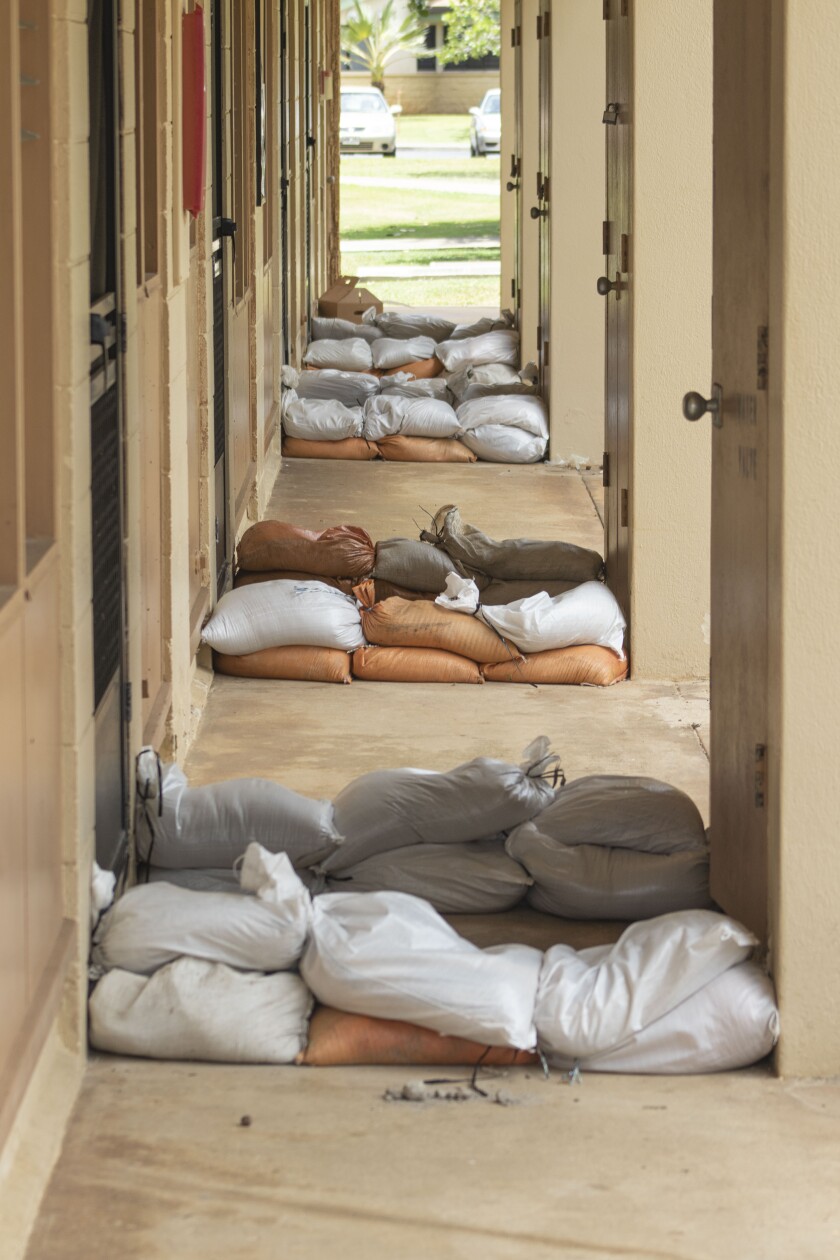
As Laie-area residents are grateful Hurricane Douglas missed the community as its more powerful winds and rains passed by about 30 miles north of the town, BYU-Hawaii faculty members discussed the importance of hurricane and emergency preparation. Additionally, the Cannon Activities Center no longer being a Red Cross approved shelter because it is in a flood zone, was also discussed in the local media along with a proposed plan to build a new shelter in Hauula on higher ground.
According to the National Oceanic and Atmospheric Administration, or NOAA, the most destructive portion of Hurricane Douglas narrowly missed Oahu on July 26.
"Technically Hurricane Douglas did hit Oahu," explained Dr. Benjamin Jordan, a professor in the Faculty of Sciences who teaches oceanography and geography. Although the hurricane did technically hit Oahu, he said, the hurricane's most dangerous and destructive part did not make landfall.
As Jordan explained what kept the brunt of the hurricane from making landfall, he said with a laugh, was "divine intervention." A professor in the Faculty of Religious Education, Marcus Martins, said he was "thankful the good Lord answered so many prayers and spared our islands from any serious damage from this storm."
Jordan went on to explain the hurricane missed the island because weather systems are hard to predict accurately. He described them as "chaotic systems" and said although most modern weather models are accurate, it is not uncommon for storms to veer off the projected path.
He said although the hurricane did not hit Oahu with full force, it is still important to prepare for weather emergencies beforehand and follow what officials suggest doing in the event of a weather emergency.
"If they say evacuate, evacuate. If they say store food and water, store food and water. If they say stay at home, stay at home. This is what they do for a living. They know what it's like, and they know what to do to prepare," said Jordan.

Martins said his preparations for the hurricane were "nothing fancy or out of the ordinary" as he followed the guidelines put forward by Oahu Civil Defense and Hawaiian Electric.
Martins said he placed sandbags in front of his door, kept extra batteries for flashlights, made sure they had enough non-perishable food and got updates from the National Hurricane Center every six hours.
As Oahu prepared for Hurricane Douglas, the issue of adequate shelters came to the forefront as the Red Cross determined two years ago it would no longer use BYUH's CAC as a Red Cross shelter. Kahuku High School is also in a flood zone, reported KHON2 News, so it too cannot be a Red Cross approved shelter.
According to Hawaii News Now, there are no approved shelters from Wailua to Kaneohe, which has led to North Shore residents "pushing for more options."
Laura Tevaga, the director of Communication and Marketing for BYUH, said the Red Cross told the university in 2018 as Hurricane Lane threatened the Hawaiian Islands, it couldn't approve the CAC as a shelter. They said because the school is located in a flood zone, which means it is at a higher risk of flooding in a weather emergency.
However, Tevaga said just because the CAC is no longer a Red Cross approved shelter, does not mean the school would not continue to use it as a shelter for students and the community. "We want to make sure our students and community are safe," she said. The university opened a shelter on campus for both Hurricane Lane and Hurricane Douglas.
Tevaga said the loss of designation as a Red Cross approved shelter simply means fewer resources are given from the Red Cross to the school in the event of an emergency.
She said there is a silver lining in this latest update. Because the CAC was formally the only Red Cross shelter on the North Shore, Tevaga said it has led to other towns seeking to establish Red Cross approved shelters. In an article published by Hawaii News Now, the Hauula Community Association has a plan to build a new shelter.
"It's on a hillside, it is close to the community and right across the road from this resilience hub is an electrical station that HECO (Hawaiian Electric Company) has and also a water pumping station," said HCA President Dotty Kelly-Paddock.
Tevaga said this is a good development because it means the entire North Shore will no longer be dependent on the CAC for a shelter in the event of another weather emergency.
According to Hawaii News Now, if the plans are approved, construction on the new shelter in Hauula could begin next summer.



